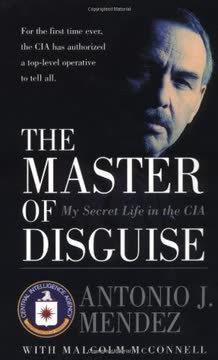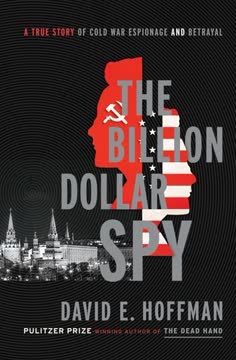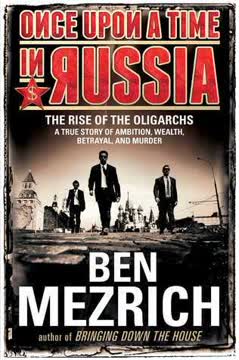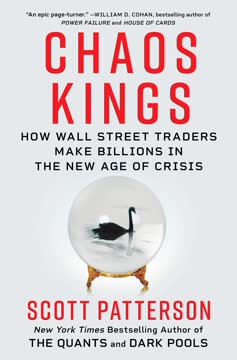Key Takeaways
1. Espionage is a Meticulous Art of Deception.
Every aspect of the altered persona—the walk, the voice, the posture, and the mannerisms—was essential. They all combined to make a convincing whole.
Beyond physical appearance. Antonio Mendez, a master of disguise, learned early that true deception goes far beyond wigs and makeup. His childhood capers, like crashing a high school dance as "Denise," taught him that embodying a persona—from walk to voice—was crucial for a convincing illusion. This foundational understanding shaped his approach to intelligence work.
Replicating reality. In the CIA's Technical Services Division (TSD), Mendez honed his skills in document forgery, where meticulous attention to detail was paramount. Reproducing foreign government documents, from ration books to military IDs, required identifying precise type fonts, replicating subtle flaws in stamps, and even mimicking the pressure of a busy bureaucrat's hand. This exacting work ensured that forged documents could withstand intense scrutiny.
Art and science. Mendez's role blended artistic talent with scientific precision. Whether stippling ink onto a photo master page or reweaving paper fibers to conceal a cut, his work was a constant battle against detection. This rigorous apprenticeship instilled in him the understanding that intelligence was not a game, but a demanding trade where mistakes could cost human lives.
2. Operational Success Demands Constant Innovation.
Necessity is the mother of invention.
Pushing technical frontiers. Mendez consistently sought to advance disguise technology, collaborating with Hollywood makeup artists like Jerome Calloway. This partnership led to breakthroughs like the GAMBIT and DAGGER disguise materials, which were more malleable, comfortable, and easier to apply quickly in the field. These innovations allowed for more realistic and adaptable transformations.
Solving complex problems. Mendez's ingenuity was evident in operations like defeating "tamper-proof tape" by immersing an entire envelope in solvent, a simple yet effective solution. He also developed methods for reweaving paper fibers to make envelope openings undetectable, even under ultraviolet light. Such creative problem-solving was vital for overcoming the ever-evolving security measures of hostile intelligence services.
Adapting to the environment. Innovation wasn't just about new materials; it was about adapting existing techniques to unique operational environments. For instance, the use of a "cobweb machine" to obscure entry points into a target building, or the development of silent helicopters (MKWURLY) for clandestine insertions, showcased the Agency's commitment to finding novel solutions for complex challenges.
3. The Human Element and Trust are Paramount.
You never lie to or attempt to deceive a fellow officer in the service. Once you crossed this line, there was no going back. In what has been aptly termed a "wilderness of mirrors," a solid foundation of trust among colleagues had to exist.
Building internal integrity. Mendez learned early the critical importance of honesty and trust within the intelligence community. A personal reprimand for a minor deception during training reinforced the principle that deceiving a fellow officer was an unforgivable breach in a profession built on secrets. This internal integrity was the bedrock of effective teamwork.
Agent-case officer bond. The relationship between a case officer and an agent was built on profound trust, especially when dealing with defectors like NESTOR or agents like HONOR. Mendez understood that an agent's confidence in their handler and the provided tradecraft was as crucial as the disguise itself. He often had to reassure agents, sometimes on the brink of panic, that the Agency would protect them.
Psychological assessment. Mendez's ability to assess the psychological state of agents, like RAPTOR's fear-induced paralysis, was vital for operational success. He recognized that fear could immobilize even the bravest individuals, necessitating direct intervention and reassurance. This deep understanding of human psychology was a key component of his success in high-stakes exfiltrations.
4. Exfiltration is the Ultimate Test of Tradecraft.
Exfiltrations are like abortions—you don’t need one unless something has gone wrong. But if you do need one, don’t try to do it yourself. We can give you a nice clean job.
High-stakes rescue operations. Exfiltration, the clandestine removal of individuals from hostile territory, was Mendez's specialty and the ultimate measure of an intelligence service's professionalism. These operations were inherently risky, often undertaken when an agent's cover was blown or they faced imminent capture, making flawless execution paramount.
Meticulous planning. Each exfiltration, like that of KGB defector NESTOR or Iranian agent RAPTOR, involved intricate planning, including:
- Developing primary and secondary alias identities.
- Creating comprehensive document packages.
- Scouting multiple escape routes (land, air, sea).
- Coordinating with multiple teams and international partners.
The goal was always to "break the trail" and make the escapee vanish without a trace, disquieting the opposition.
Unwavering success. Mendez's team maintained a perfect record of success in over 150 exfiltration operations during his career. This achievement was a source of immense pride, demonstrating the Agency's commitment to protecting its assets, even in the most perilous circumstances. The ability to deliver a "nice clean job" became their audacious calling card.
5. Navigating Bureaucracy is a Crucial Skill.
If you took it too seriously, you’d tighten up and lose.
Playing the "Pinball" game. Mendez learned that competing for resources within the CIA, especially at Headquarters, was a strategic game he called "Pinball." The objective was to keep his ideas and programs (the "ball") in play as long as possible, racking up "scores" in the form of budget, staff, and technical support. Taking it too seriously could lead to failure.
Strategic influence. Mendez, despite being a technical officer, mastered the art of bureaucratic influence. He leveraged his operational successes, cultivated relationships with senior officers like Bull Monahan, and strategically presented his proposals to gain support for disguise development and training. This approach helped overcome internal resistance and secure funding for innovative projects.
Overcoming resistance to change. The Agency's shift towards technology and away from traditional human intelligence (HUMINT) created internal friction. Mendez faced skepticism from veteran case officers who viewed disguises as amateurish. By demonstrating the practical value of advanced disguise techniques and integrating them into core training programs, he gradually transformed the Agency's operational mindset.
6. Disguise is a Tool, Not a Magic Bullet.
It’s not the quality of the disguise that matters, but the quality of the operation.
Integrated tradecraft. Mendez consistently emphasized that physical disguise was merely one component of a successful clandestine operation. Its effectiveness depended on being seamlessly integrated with other tradecraft elements, such as:
- Plausible cover legends.
- Authentic "pocket litter" (personal effects).
- Meticulous surveillance detection runs.
- The agent's demeanor and ability to "live the legend."
Beyond appearance. The goal was not just to alter appearance, but to create a complete, believable persona that could withstand scrutiny. This meant coaching agents on subtle mannerisms, voice control, and even how to react under stress. The success of the GAMBIT disguise in Vientiane, transforming an African-American officer and a Lao official into Caucasian diplomats, highlighted this holistic approach.
Operational context is key. Mendez understood that the choice and application of a disguise had to be tailored to the specific operational environment. A disguise that worked in a chaotic Asian city might be useless in the highly controlled environment of Moscow. The "quality of the operation"—its planning, execution, and the psychological preparation of the individuals involved—was always paramount.
7. The Cold War was a Relentless Battle of Wits.
Welcome to Moscow, I mused, where appearance often masked sinister reality, a city that defined the well-known wilderness of mirrors.
A unique operational environment. Moscow, the "Center" of the KGB, presented the ultimate challenge for CIA operations. It was a city where constant, pervasive surveillance was the norm, and every Soviet citizen, from ice cream vendors to taxi drivers, could potentially be connected to the vast KGB apparatus. This created a "wilderness of mirrors" where trust was scarce and deception was omnipresent.
KGB's omnipresence. The KGB's Seventh Chief Directorate employed massive resources for surveillance, including:
- Dedicated 24/7 surveillance teams for suspected foreign intelligence officers.
- Ubiquitous hidden microphones and video cameras in apartments and offices.
- Strict travel restrictions for foreigners.
- A network of informants and "mili-men" (civil police).
This saturation made traditional clandestine meetings nearly impossible, forcing the CIA to innovate.
High stakes and psychological warfare. The spy-versus-spy struggle in Moscow was a constant psychological battle. The KGB aimed to identify and neutralize foreign intelligence efforts, often using provocative actions or entrapment. For CIA officers, every move outside the embassy's "Bubble" was a calculated risk, demanding unwavering discipline and mental fortitude.
8. Counter-Surveillance Requires Deep Understanding of the Opposition.
It’s essential that case officers allow the surveillance teams to maintain their ‘zone of comfort,’
Exploiting KGB patterns. Mendez and his colleagues in Moscow meticulously studied the predictable behavior of KGB surveillance teams. They realized that the KGB, despite its vast resources, had a "zone of comfort"—a perceived distance and level of visibility they needed to maintain on their targets. Disrupting this comfort zone would trigger an intensified, often overwhelming, response.
The "Silver Bullet" technique. This insight led to the development of the "CLOAK-Silver Bullet" technique, a highly classified method for temporarily breaking surveillance without alarming the KGB. It involved creating plausible diversions and using sophisticated disguises to allow an officer to slip away for a brief, secure meeting, then return undetected. The key was to make the KGB believe their target was still accounted for, even when they weren't.
Strategic deception. The CLOAK technique involved a complex interplay of:
- Carefully established "dull" daily routines for officers.
- The use of "persons of little interest" as cover.
- Precisely timed diversions (e.g., a "broken" film projector).
- Rapid disguise changes in unexpected locations.
This allowed CIA officers to conduct crucial personal meetings with agents, a capability previously thought impossible in Moscow.
9. Even Minor Details Can Make or Break an Operation.
Tradecraft is all in the details. If we can’t accomplish the simple tasks, how can we take on the impossible missions?
Meticulous attention to minutiae. Mendez's career was defined by an obsessive focus on the smallest details, recognizing that seemingly insignificant elements could expose an entire operation. From the precise angle of a forged stamp to the type of paper used for a document, every detail had to be perfect to pass the scrutiny of hostile intelligence services.
The importance of "pocket litter." Beyond official documents, "pocket litter"—everyday items like matchbooks, bus tickets, and local currency—was crucial for authenticating an alias. These items had to be consistent with the cover legend and reflect the subject's supposed travel and activities. Mendez even "seasoned" documents with jungle mildew or rust to enhance their authenticity.
Learning from every experience. Mendez and his teams constantly analyzed their successes and failures, no matter how minor. The incident with the "dead rats" used as dead drops being eaten by hungry cats, or the subtle flaws in East German border stamps, provided invaluable lessons. This continuous learning and refinement of tradecraft ensured that the Agency remained at the cutting edge of espionage.
10. A Life in Intelligence Demands Personal Sacrifice.
As with any Agency family, they were expected to endure my long absences with only scant details of the operations I conducted.
The hidden cost of service. Mendez's memoir reveals the profound personal sacrifices demanded by a career in clandestine intelligence. Long absences, the inability to share details of his work, and the constant threat of danger placed immense strain on his family life. His wife, Karen, bore the brunt of managing the household and raising their children with minimal information about his whereabouts or activities.
Living under cover. The requirement to maintain a "cover legend" extended to the entire family, impacting their social lives and even mundane activities like college applications. This constant vigilance and separation from a "normal" life were part of the unspoken contract of working for the CIA, a sacrifice often made without public recognition.
Unacknowledged heroism. Despite playing pivotal roles in critical Cold War operations, Mendez and his colleagues often received no public credit for their achievements. Awards like the Intelligence Star were given in secret ceremonies, further emphasizing the hidden nature of their contributions. This lack of public acknowledgment was a bittersweet reality for those who served in the shadows, fighting for national security.
Last updated:
Review Summary
The Master of Disguise receives mostly positive reviews, with readers praising its insider's account of CIA operations and tradecraft. Many find Mendez's stories fascinating, particularly his work in disguises and document forgery. The book offers insight into Cold War-era espionage and the real-life events behind the movie Argo. Some readers note the book's dry tone and occasional repetition, while a few criticize its bias towards the CIA. Overall, it's considered an informative and captivating read for those interested in intelligence work.
Similar Books
Download PDF
Download EPUB
.epub digital book format is ideal for reading ebooks on phones, tablets, and e-readers.








